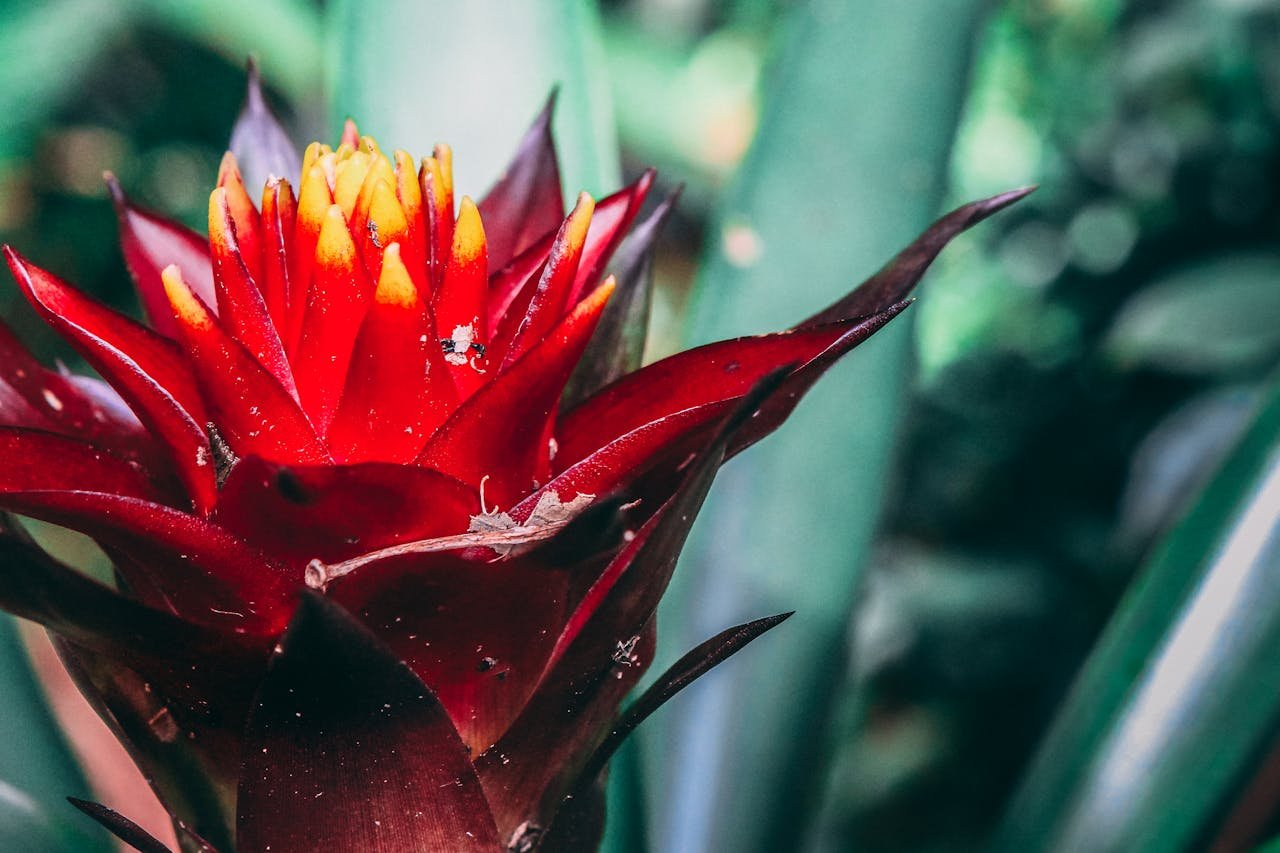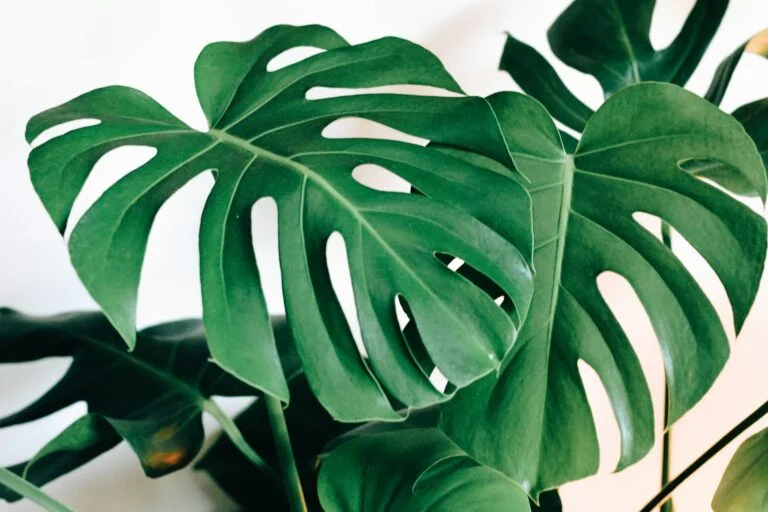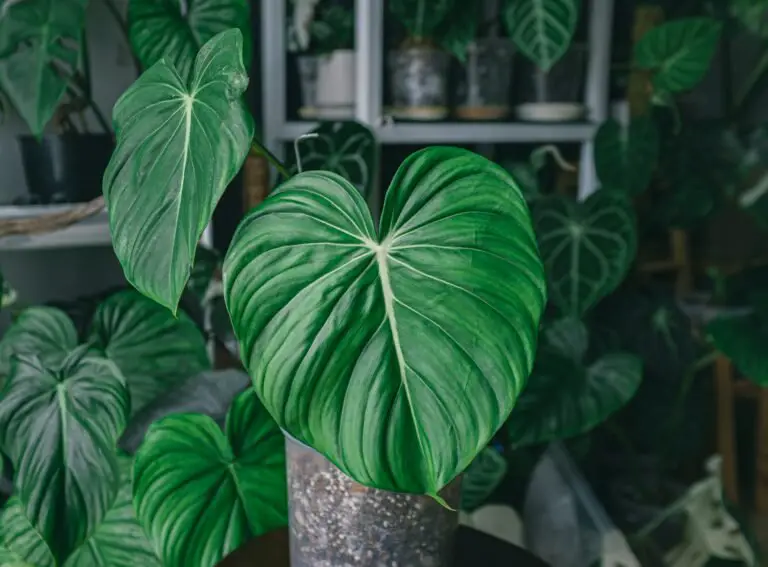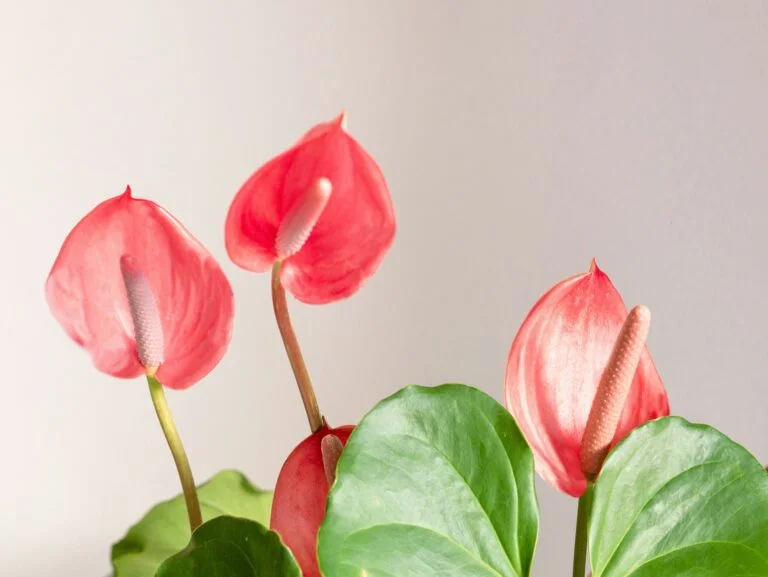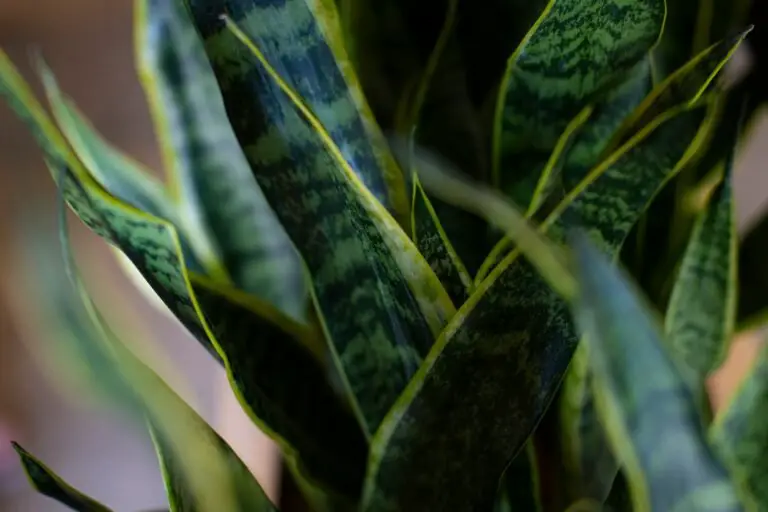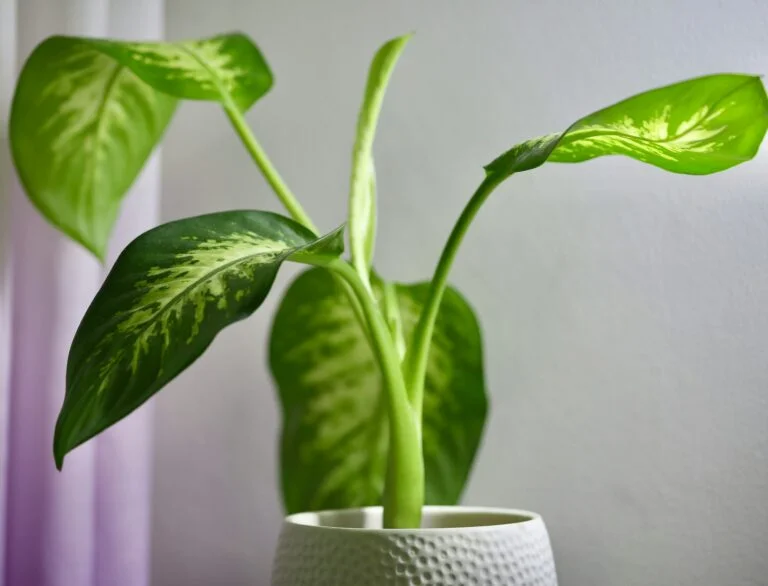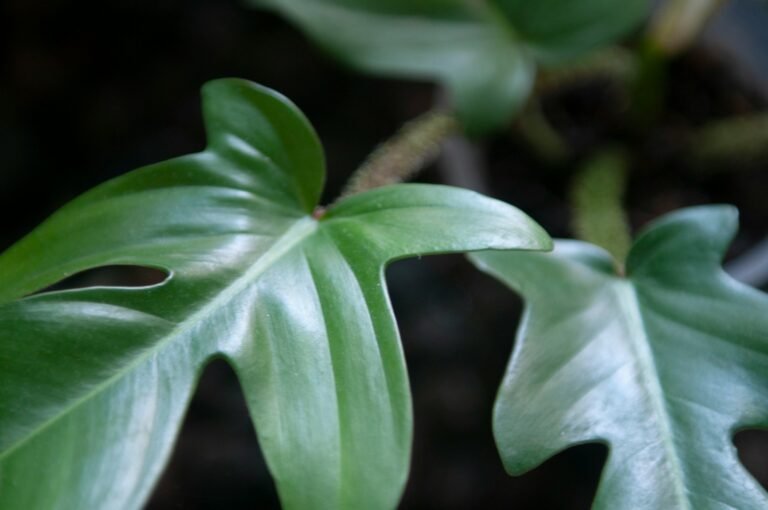Bromeliad Plant Care: How to Keep This Tropical Showoff Blooming and Bold
If you want a plant that screams “I’m not like other houseplants,” look no further than the Bromeliad. With its wild colors, spiky leaves, and center-stage flower, this tropical stunner turns even the most boring shelf into a vacation.
The best part? It’s easier to care for than it looks.
The bloom might say “high-maintenance,” but Bromeliads are actually surprisingly chill, as long as you don’t treat them like a cactus or a fern.
Here’s how to keep your Bromeliad thriving, colorful, and not slowly collapsing in your kitchen window.
1. Understand the Flower (It’s a Long Goodbye)
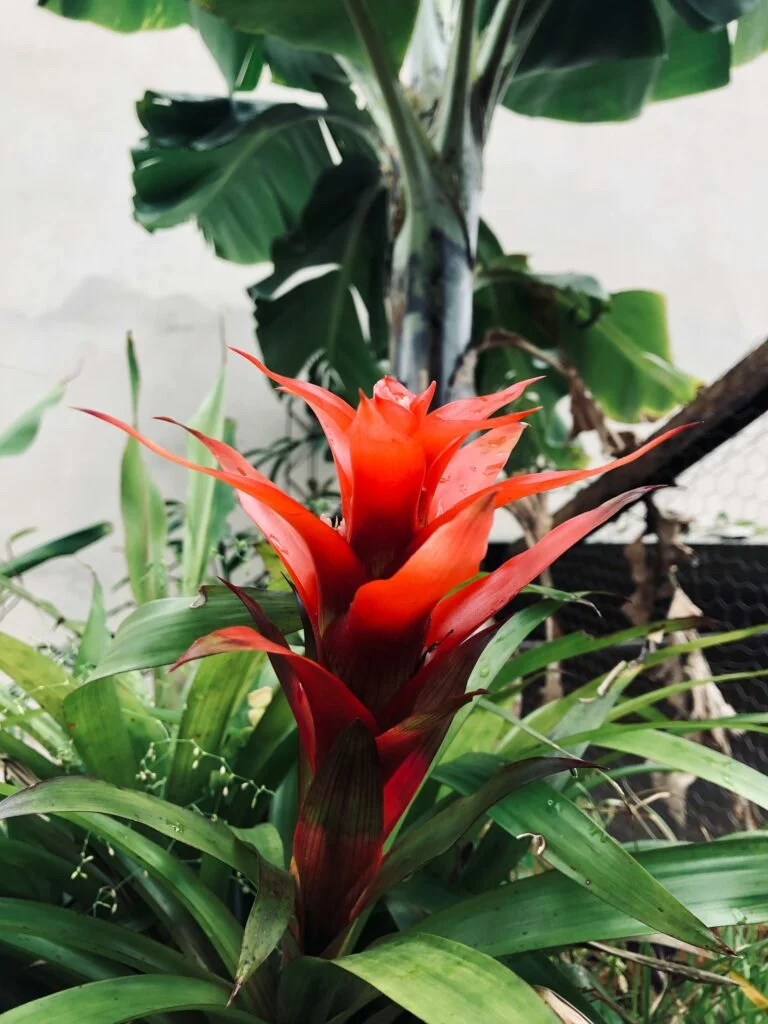
Let’s clear this up now: Bromeliads bloom once. Just once.
That stunning, fiery flower can last for 3–6 months, but after that? It fades, and the plant eventually dies.
But before you panic—it makes pups (baby plants) before going. So while the original plant checks out, it leaves you with replacements. Kind of like a floral baton pass.
2. Water the Center (Yes, Really)
Unlike your typical plant, Bromeliads have a “tank” or cup in the center—that’s where they want their water.
How to water:
- Fill the central cup halfway with filtered or distilled water
- Empty and refill every 1–2 weeks to prevent funk or rot
- Water the soil lightly, too—but not often
Overwatering the soil is how people accidentally rot the roots. Keep the soil barely moist, not soaked.
3. Use Filtered or Distilled Water
Tap water often contains minerals and fluoride, and Bromeliads hate that stuff. You’ll start seeing browning tips or leaf edges if the water isn’t clean.
If in doubt:
- Use distilled, rain, or filtered water
- Don’t use cold water from the tap—it can shock the plant
- Avoid hard water like it’s a bad ex
Clean water keeps both the tank and the leaves looking fresh.
4. Light = Color (But Don’t Burn It)
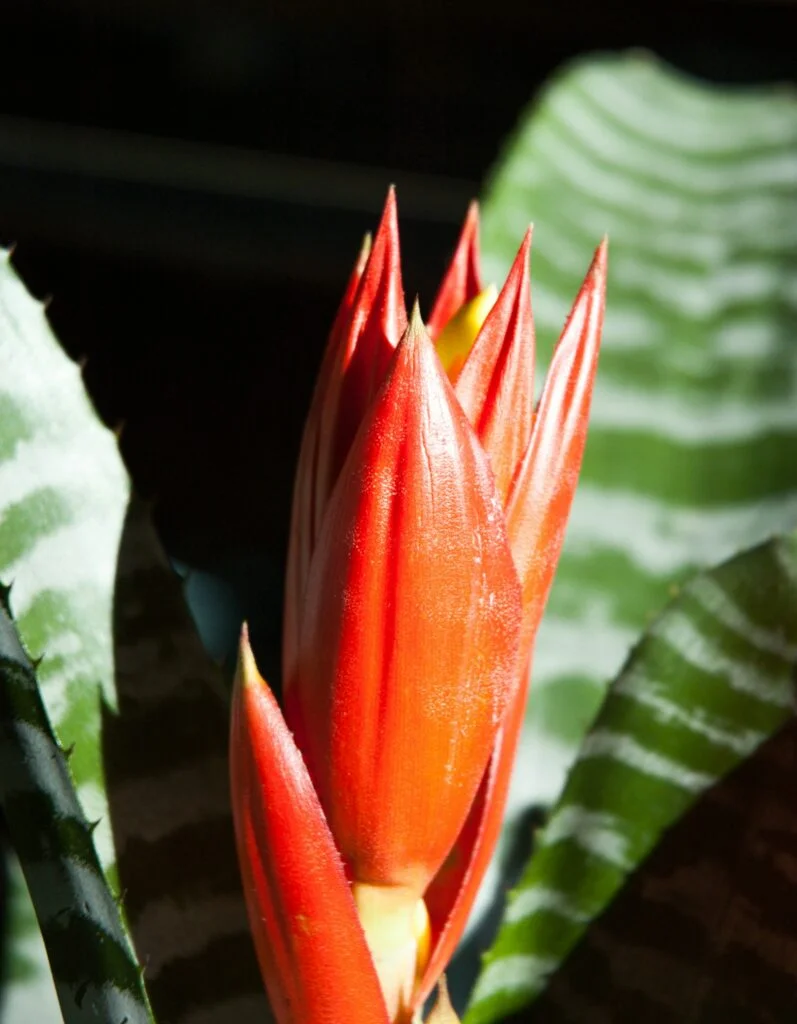
Bright light = better color, stronger leaves, and more pups. But harsh, direct sun? Not a good time.
Best light:
- Bright, indirect light near a window
- Filtered morning sun is fine
- East- or west-facing windows are perfect
- Avoid all-day southern exposure unless it’s filtered through sheer curtains
Too little light = faded colors and floppy leaves
Too much light = bleached leaves or crispy tips
5. Humidity Is Not Optional
Bromeliads are tropical. They don’t want to live in a dry, dusty room.
Humidity makes the plant happier, stronger, and more likely to bloom.
Aim for:
- 50–60% humidity minimum
- Use a humidifier, pebble tray, or place it in a bathroom with good light
If the leaf tips are browning or curling? You’re probably too dry.
6. Skip the Fertilizer (or Keep It Light)
Too much fertilizer can actually prevent blooming or damage the plant. So go easy.
If you do feed:
- Use a very diluted orchid or bromeliad-specific fertilizer
- Apply to the soil or lightly into the tank (but not too much)
- Do this once a month in spring and summer, max
Overfeeding leads to salt buildup = brown tips and stunted growth.
7. Propagate Those Pups (Don’t Waste Them)
Once your Bromeliad starts fading, it’ll begin producing pups around the base. That’s your cue to prep for the next generation.
How to propagate:
- Wait until pups are at least one-third the size of the parent
- Gently separate with a clean knife or shears
- Plant pups in well-draining potting mix
- Water lightly and treat them like grown-ups (they mature fast)
Each pup can eventually bloom on its own, and the cycle continues. Nature’s way of saying, “Chill—I got you.”
Bonus: What Soil and Pot Setup Works Best?
You don’t need anything fancy—just light, well-draining soil.
Use:
- Orchid bark mix
- Peat-based potting soil with perlite or sand
- Terracotta pot if you’re heavy-handed with watering (it helps the soil dry out)
The roots don’t like being soggy or smothered, so drainage holes are a must.
Final Thoughts
Bromeliads look like exotic, high-maintenance divas, but they’re actually pretty laid-back—as long as you follow their rules.
Water the tank, give them bright light, don’t drench the soil, and keep humidity high. That’s it.
They bloom once, fade gracefully, and leave you with a whole crew of baby plants. Kind of poetic, honestly.

